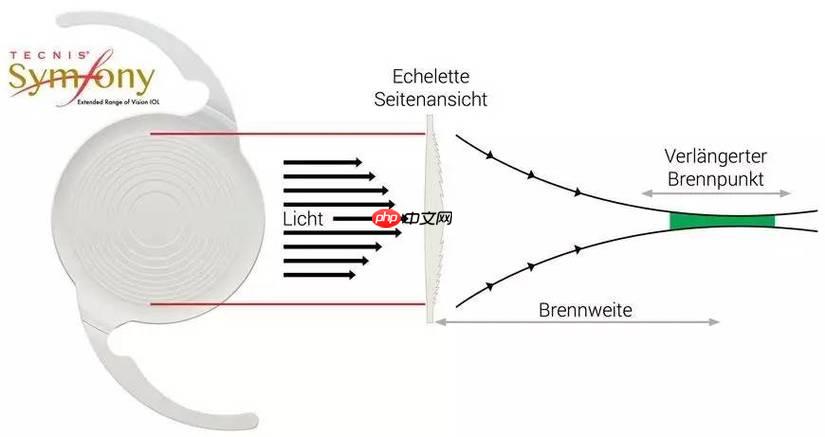答案:通过Symfony的Profiler和VarDumper组件可将诊断信息转为数组。首先确保Profiler已启用,通过Profiler服务加载Profile并获取数据收集器,如DoctrineDataCollector,调用其方法获取具体数据并遍历转换为数组结构;对于复杂对象,可使用VarDumper的VarCloner和CliDumper将对象转为数组表示,同时处理循环引用问题,可通过__debugInfo()、Serializable接口或手动断开引用避免无限递归;获取Token可通过请求Cookie、命令行参数或响应头;若无数据,需检查Profiler启用状态、环境配置、权限及数据收集器设置;生产环境中应谨慎启用,限制访问并采样收集以减少性能影响。

Symfony 中将诊断信息转换为数组,其实核心在于利用 Symfony 提供的
TraceableDataCollector
VarDumper
启用 Profiler: 确保你的 Symfony 环境中启用了 Profiler。通常,在
config/packages/profiler.yaml
enabled
true
收集诊断信息: Symfony 的 Profiler 会自动收集各种诊断信息,例如请求、响应、数据库查询、日志等等。
访问 Data Collectors: 在你的控制器或服务中,你可以通过
Profiler
use Symfony\Component\HttpKernel\Profiler\Profiler;
public function someAction(Profiler $profiler)
{
if ($profiler) {
$profile = $profiler->loadProfile($token); // 假设你已经有了 token
$dataCollectors = $profile->getCollectors();
// 现在你可以遍历 $dataCollectors 并提取信息
}
}提取信息并转换为数组: 关键在于如何从
DataCollector
DataCollector
DoctrineDataCollector
getQueries()
use Doctrine\Bundle\DoctrineBundle\DataCollector\DoctrineDataCollector;
if (isset($dataCollectors['db'])) {
/** @var DoctrineDataCollector $doctrineCollector */
$doctrineCollector = $dataCollectors['db'];
$queries = $doctrineCollector->getQueries();
$queryArray = [];
foreach ($queries as $query) {
$queryArray[] = [
'sql' => $query['sql'],
'params' => $query['params'],
'executionMS' => $query['executionMS'],
];
}
// $queryArray 现在包含了数据库查询信息的数组
}使用 VarDumper 组件 (可选): 对于更复杂的数据结构,可以使用
VarDumper
use Symfony\Component\VarDumper\Cloner\VarCloner; use Symfony\Component\VarDumper\Dumper\CliDumper; $cloner = new VarCloner(); $dumper = new CliDumper(); $data = $cloner->cloneVar($someComplexObject); $arrayRepresentation = $dumper->dump($data, true); // true 表示返回字符串 // $arrayRepresentation 现在包含了对象的字符串表示,你可以进一步处理它 // 注意:直接使用dump()方法,可能会输出到终端,所以需要使用第二个参数true来返回字符串
Profiler Token 是与特定请求关联的唯一标识符。获取 Token 的方式取决于你所处的环境。
在 Web 环境中: 当你在浏览器中访问一个启用了 Profiler 的页面时,Profiler 会将 Token 存储在 Cookie 中。你可以通过读取 Cookie 来获取 Token。
use Symfony\Component\HttpFoundation\RequestStack;
public function someAction(RequestStack $requestStack)
{
$request = $requestStack->getCurrentRequest();
$token = $request->cookies->get('sf_redirect'); // sf_redirect 存储了最新的 Token
// 或者使用 sf_cookie_name 来获取 cookie 的名字
// $token = $request->cookies->get($this->container->getParameter('profiler.cookie_name'));
if ($token) {
// 使用 $token 加载 Profile
}
}在命令行环境中: 在命令行环境中,你需要手动将 Token 传递给你的脚本。例如,你可以通过命令行参数传递 Token。
php bin/console my:command --token=abcdef123456
然后在你的命令中获取 Token:
use Symfony\Component\Console\Input\InputInterface;
use Symfony\Component\Console\Output\OutputInterface;
use Symfony\Component\Console\Command\Command;
class MyCommand extends Command
{
protected function configure()
{
$this->setName('my:command')
->addOption('token', null, InputOption::VALUE_REQUIRED, 'The Profiler Token');
}
protected function execute(InputInterface $input, OutputInterface $output)
{
$token = $input->getOption('token');
if ($token) {
// 使用 $token 加载 Profile
}
}
}从 Response Header 中获取: 有时候,Symfony 会在 Response 的 Header 中包含 Profiler Token。你可以检查 Response Header 来获取 Token。这通常发生在重定向之后。
在将复杂对象转换为数组时,循环引用是一个常见的问题。
VarDumper
*Circular reference*
自定义序列化: 你可以实现
Serializable
class MyClass implements \Serializable
{
private $propertyA;
private $propertyB;
public function serialize()
{
// 避免序列化循环引用的属性
return serialize([
'propertyA' => $this->propertyA,
// 忽略 propertyB 如果它包含循环引用
]);
}
public function unserialize($serialized)
{
$data = unserialize($serialized);
$this->propertyA = $data['propertyA'];
}
}使用 __debugInfo()
__debugInfo()
var_dump()
class MyClass
{
private $propertyA;
private $propertyB;
public function __debugInfo()
{
return [
'propertyA' => $this->propertyA,
// 忽略 propertyB 如果它包含循环引用
];
}
}手动处理循环引用: 在将对象转换为数组之前,手动检查并断开循环引用。这可能需要深入了解你的对象结构。
function removeCircularReferences($object) {
// 使用 SplObjectStorage 跟踪已经访问过的对象
$visited = new \SplObjectStorage;
return removeCircularReferencesRecursive($object, $visited);
}
function removeCircularReferencesRecursive($object, \SplObjectStorage $visited) {
if (is_object($object)) {
if ($visited->contains($object)) {
return '*Circular reference*'; // 或者返回 null,取决于你的需求
}
$visited->attach($object);
$array = (array) $object; // 强制转换为数组以访问私有和受保护的属性
foreach ($array as $key => $value) {
$array[$key] = removeCircularReferencesRecursive($value, $visited);
}
$visited->detach($object);
return $array;
} elseif (is_array($object)) {
foreach ($object as $key => $value) {
$object[$key] = removeCircularReferencesRecursive($value, $visited);
}
return $object;
} else {
return $object;
}
}
$data = removeCircularReferences($someComplexObject);如果 Profiler 没有收集到任何数据,可能是以下原因:
Profiler 未启用: 检查
config/packages/profiler.yaml
enabled
true
collect
true
环境配置: Profiler 通常只在
dev
test
.env
APP_ENV
防火墙配置: 检查你的防火墙配置,确保 Profiler 的 URL(通常是
/_profiler
请求过早结束: 如果请求在 Profiler 初始化之前结束,Profiler 可能无法收集到任何数据。确保你的代码没有过早地发送响应或抛出异常。
数据收集器未启用: 某些数据收集器可能默认未启用。你可以在
config/packages/profiler.yaml
profiler:
collect: true
enabled: true
collectors:
doctrine:
enabled: true # 确保 Doctrine 数据收集器已启用权限问题: 确保 Symfony 有权限写入
var/profiler
虽然通常不建议在生产环境中启用 Profiler,但在某些情况下,你可能需要在生产环境中进行性能分析。
谨慎启用: 只在必要时启用 Profiler,并在分析完成后立即禁用它。
限制访问: 使用防火墙或其他安全机制限制对 Profiler URL 的访问,只允许授权用户访问。
使用采样: 不要收集所有请求的 Profiler 数据,而是使用采样来减少性能开销。你可以配置 Profiler 只收集一部分请求的数据。
profiler:
collect: true
enabled: '%kernel.debug%' # 通常只在 debug 模式下启用
use_x_debug_token: false # 禁用 X-Debug-Token
matcher:
path: ^/ # 匹配所有 URL
attributes:
_profiler: true # 确保路由中定义了 _profiler 属性禁用不必要的数据收集器: 禁用不必要的数据收集器,以减少性能开销。
监控性能影响: 启用 Profiler 后,密切监控应用程序的性能,确保它不会对用户体验产生负面影响。
总之,将 Symfony 诊断信息转换为数组是一个涉及多个步骤的过程,需要你理解 Profiler 的工作原理,并根据你的具体需求进行定制。
以上就是Symfony 怎样将诊断信息转为数组的详细内容,更多请关注php中文网其它相关文章!

每个人都需要一台速度更快、更稳定的 PC。随着时间的推移,垃圾文件、旧注册表数据和不必要的后台进程会占用资源并降低性能。幸运的是,许多工具可以让 Windows 保持平稳运行。

Copyright 2014-2025 //m.sbmmt.com/ All Rights Reserved | php.cn | 湘ICP备2023035733号